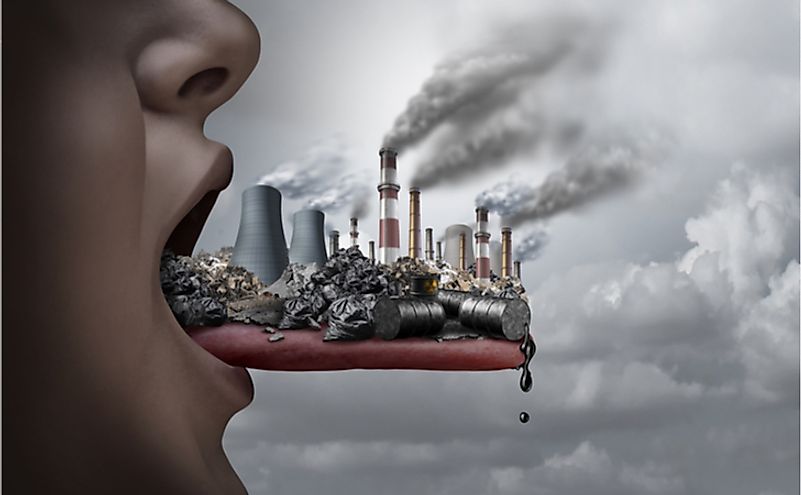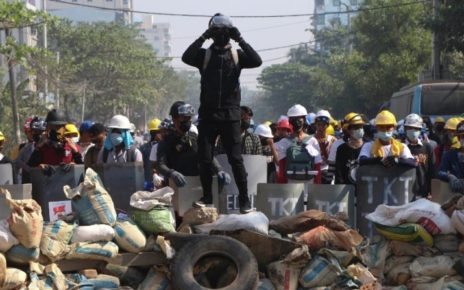The feel of technology, the buzz of big cities and what it can offer attracts millions, every year millions of people migrate from small towns to big cities in order to explore and grow in them but what they see is only the flashy lights and the modern lifestyle it holds but not the side effects it carries with its own.
Except for those who live in the hills or secluded villages somewhere in the lap of nature, all the other people in the world survive by inhaling polluted air.
99% of the world’s population breathes polluted air above the standards set by the World Health Organization. This is according to the latest figures released by the WHO.
If you think covid-19 is taking more lives, the pollution epidemic is competing with it to take more and more lives every year. Every year, 70 million people worldwide are exposed to this pollution. it is ringing alarm bells both inside and outside the house. Outdoor inhalation causes 42 lakh deaths annually. Smoke pollution in kitchens kills 38 lakh people every year. About 13.5 lakh people in our country die every year from various chronic diseases including cancer, lung diseases, heart diseases, and stroke caused by smoking.
Air pollution in India will cause nearly 17 lakh deaths in 2019. This is 18 percent of the total deaths recorded in our country. Deaths and diseases due to air pollution together cost Rs. 2,60,000 crore financial loss. It accounts for 1.4 percent of GDP, according to a report. The total number of deaths due to covid-19 in the last two years is 54.4 lakh. However, air pollution kills 70 lakh people every year, but the government doesn’t care enough to bring in the right measures.
Read More: The tension between Ukraine and Russia raises; the US to intervene
So what is air pollution?
Contamination of natural air in the Earth’s surface environment with chemical, physical, and biological carriers of natural properties. In short, gale polluted air contains unusual chemicals or dust particles.

Types of air pollution
Air pollution is caused by cooking wood, motor vehicles, industries, construction sector, forest burning, etc. Large-scale incineration of crop residues on farms during the winter in some parts of the country is causing air pollution along with smoke, fog, and micro-particle emission to the environment.
Smoking and radon are the leading causes of lung cancer. Radon is one of the three most dangerous air pollutants in the home.
Major pollutants for public health include tiny dust particles such as carbon monoxide, nitrogen dioxide as well as sulfur dioxide. In addition, volatile organic compounds such as gasoline, benzene, styrene, and formaldehyde can cause air pollution and endanger public health.
Natural air pollutants aren’t something to be forgotten. Forest fires, pollen, dust storms, radon gas, etc are equally harmful to the environment just like the chemical emission.
Climate Change
Air pollutants have a complex relationship with climate change. Particulate matter (PM) dust particles heat or cool the atmosphere. Some pollutants, such as black carbon and ozone, increase the temperature of the atmosphere by trapping heat. However, sulfur dioxide cools the atmosphere by forming light-reflecting particles. Greenhouse gasses also heat the atmosphere, trapping sunlight in the atmosphere. The main ones on this list are carbon dioxide, methane, nitrous oxide, water vapor (all naturally occurring) as well as fluorinated gasses (synthetic). These are called greenhouse gasses and which are posing a huge threat to the environment. These greenhouse gasses have been causing unrecoverable damage to the ozone layer and if the rate of its emission continues there is no repair for the ozone layer.
Per capita emissions of greenhouse gasses are low in our country. Overall, however, the United States ranks in the top two most polluting countries. If China is our country in third place. The climate is warming due to the burning of fossil fuels such as coal and petroleum products for human consumption.
In the past year, we all have witnessed the complexity of weather. It has been raining, flooding, forest fires, volcano, and everything is coming down at one point despite a strict warning of climate change no country has taken it any seriously except for in speeches and some papers.
By 2100, global average temperatures could reach 5.4 degrees Celsius. This change poses a serious threat to the environment. Public health is being harmed. Thirty for the survival of the species. Enduring this has become a challenge for the world. Policymakers must implement better strategies. The situation in our country has improved slightly since the enactment of the Air Pollution Prevention and Control Act – 1981.
Most of all, children and old people are vulnerable to diseases. Especially children, their lungs are very sensitive. When they are out in the open whether it is for school or anything it may be they will become the victim of air pollution at an early age itself. Under the leadership of the Earth Leaders for Environmental Monitoring program, some schools in Ahmedabad and Surat have developed and installed kits with children to show the toxicity of the environment. The data is linked to the cloud and is shared with parents and anyone else who can find out when and how much air pollution is present. This program is helping to understand the problem of air pollution and to find solutions.

Pollutants in the air
Sulfate, nitrates, ammonia, sodium chloride, black carbon (particles emitted from diesel vehicles contain black carbon), and mineral dust are all pollutants. We breathe in all these tiny particles that float in the air. No matter how micro they are, they travel through our nostrils and make their way towards our lungs. However, even smaller pollutants can be harmful to health. Contaminant cells with a diameter of 2.5 micrometers or less pass through the lungs and into the human bloodstream. 2.5 P.M. cells make up about one-thirtieth of the diameter of our hair. These are the fifth most dangerous factors that bring people closer to death. PM accounts for 80 percent of air pollution deaths. 2.5 Pollution is caused by cells. According to the GBD-Lancet in 2012, 6,27,000 people died in 2010 as a result of these deaths, up from 6% that year.
Each country has different standards regarding air quality. In our country also the Central Pollution Control Board has set standards. People should be made aware of the Air Quality Index (AQI). The index has six sections that indicate the severity of the pollution. The level of quality is determined by considering eight pollutants.
For two years the Government of India has set the Stage Emission Standards (BSE), the BS6 standards, to control emissions from fossil fuels, motor vehicles, and other machinery. These air pollution standards are being implemented for a specified period of time under the auspices of the Central Pollution Control Board under the Central Ministry of Environment, Forests, and Demonstration. From 2020, registration across the country will be possible only for vehicles manufactured in compliance with BharatStage6 standards. Oil companies also supply sulfur-laden petrol and diesel up to 100 ppm in compliance with BS6 standards. BS6 compliant diesel and petrol have the same efficiency as CNG, which is known as a less polluting fuel.
In 2019, 67 lakh people worldwide died due to air pollution. China had the highest death toll at 18.5 million, followed by India at 16.7 million. One out of every four deaths in our country is linked to air pollution. Air pollution is the fourth leading cause of death worldwide in 2019 after blood pressure, tobacco, and poor diet.
Prolonged exposure to air pollution can lead to a variety of illnesses and even death.
According to State of Global Air 2020. Half of the deaths due to air pollution in the country in 2019 were from Uttar Pradesh, Bihar, West Bengal, and Rajasthan. The resulting financial loss was $ 3,680 crore. In other words, 1.36 percent of our gross domestic product.
In 2019, 62,808 people in Andhra Pradesh died due to air pollution. Air pollution is the cause of 15.6 percent of deaths in AP. The financial loss was $ 134.95 crore. It is 1.09 percent of the state’s gross domestic product.
35,364 people died in Telangana due to air pollution in 2019. About 15.5 percent of the 100 deaths in the state are due to air pollution. The financial loss was $ 111.59 billion. It is 0.91 percent of the state’s gross domestic product.
Effects on Human Health
Air pollution affects the lungs, heart, nervous system and reduces brain function.
The effect of air pollution is not the same for everyone. It has a greater impact on those in the high-risk group such as the elderly, infants, pregnant women, and those with chronic heart and lung diseases.
Children’s lungs are still developing so when they are exposed to air pollution it can damage their health.
Air pollution can cause minor ailments such as eye itching, headaches, nausea as well as major health problems such as decreased lung capacity. In addition, prolonged inhalation of toxic gasses increases the risk of diseases such as lung cancer. In addition, these air pollutants enter the lower part of the lungs and cause diseases such as bronchitis and arthritis.
Also Read: WHO: 50 crore people into poverty and there is no time left
Discover more from Thenewsdoor
Subscribe to get the latest posts sent to your email.






One thought on “Air Pollution: The new threat for human survival; 70 lakh deaths per year!”